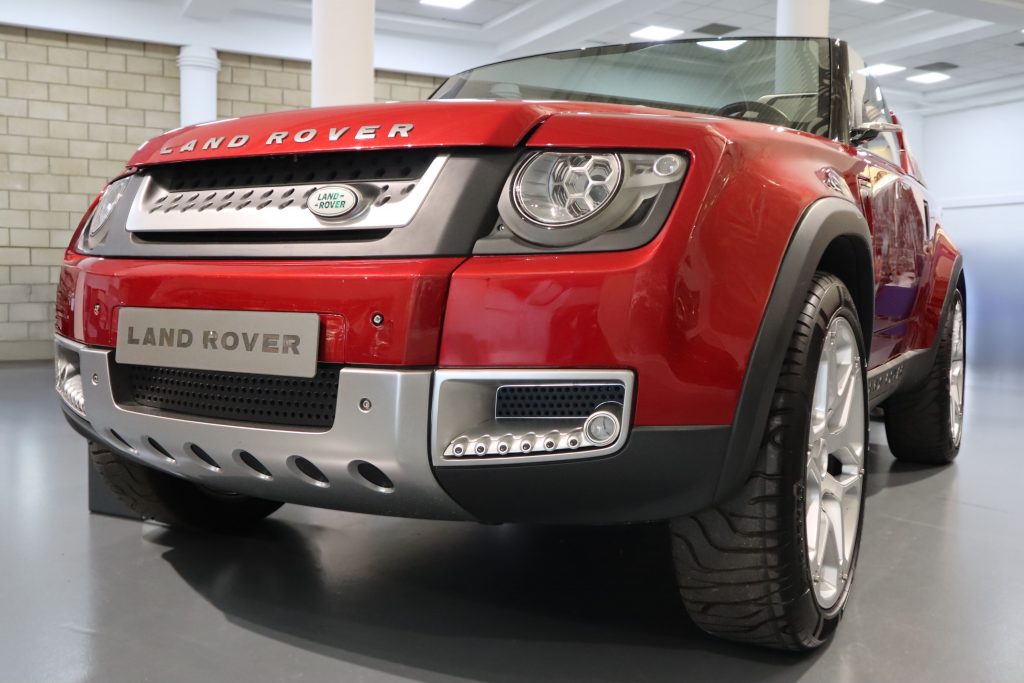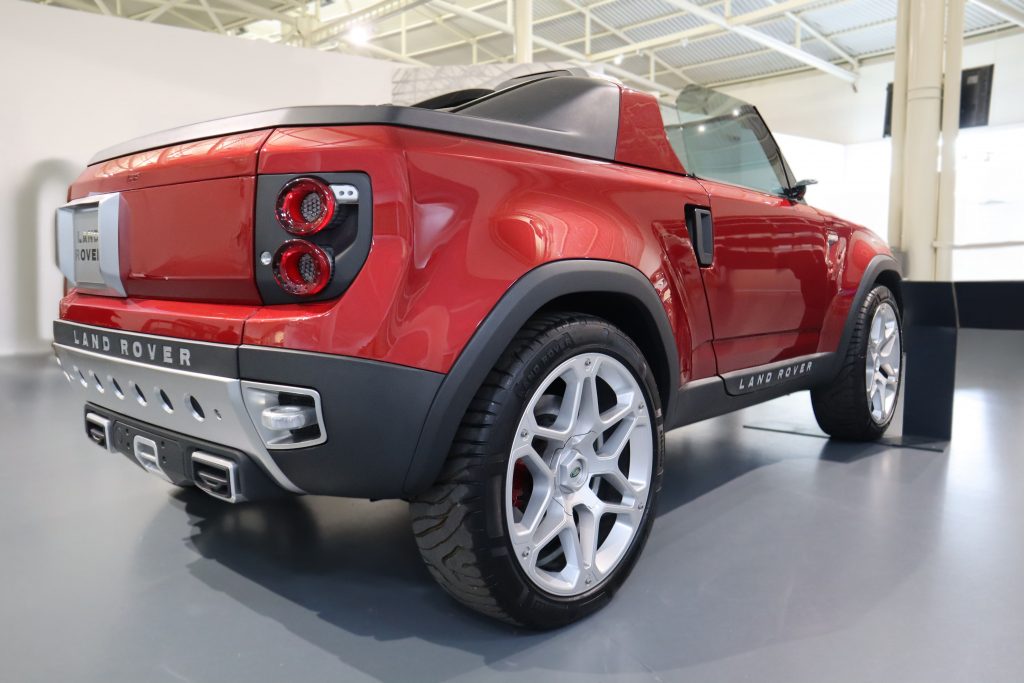Replacing an Icon
Replacing the Original Land Rover was going to be tricky. So much so Land Rover had two attempts. Today we look at the first of those Vehicles, the DC100
Words and Pictures by Ian M. Garner
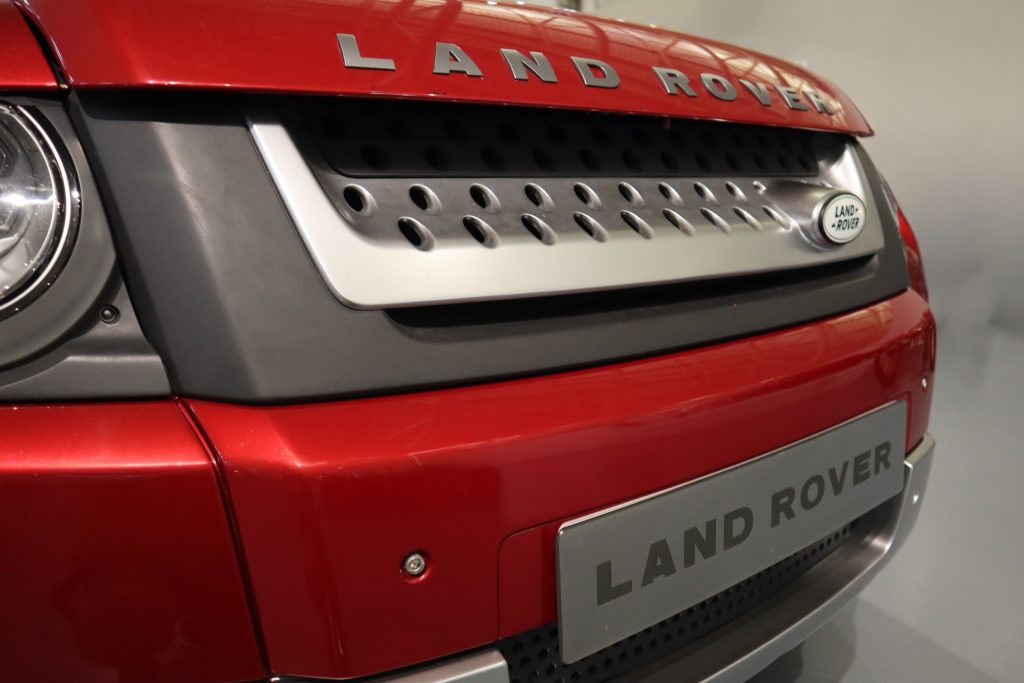
When Land Rover decided to replace the Range Rover with the P38a I can recall comparing it to the difficult second album. How do you replace an Icon? However, the design and development of the P38a had nothing on the process or creating a replacement for the Defender though. The very vehicle that, through its heritage and linage, defined the Land Rover brand. Sure, there had been prototypes in the past, such as the Challenger and the LCV2, but whilst they may have hinted at being a replacement, it was never cited as such. The first time Land Rover actually did this was at the 2011 Frankfurt motor show when it revealed to the world the Defender Concept 100 or DC100 as it was known. Technically Land Rover unveiled two concepts, the DC100 and the DC100 sport. It was a huge moment for Land Rover, even John Edwards, who was the Global Brand Director at the time stated
“The entire Land Rover Team is excited about the opportunity, and the responsibility of creating the replacement for the iconic Land Rover Defender”
When a company reveals a concept vehicle, it usually about showcasing the design language of the brand and demonstrating the new technology that is going to be introduced. The press material launched was keen to expand on Land Rovers heritage of versatility. Sketches showed the DC100 being used as a leisure pursuit vehicle with Jet Ski attached to hard tops for the press and red cross. There were even versions of a mobile cinema and tracked version linking the DC100 directly to its series Land Rover roots.
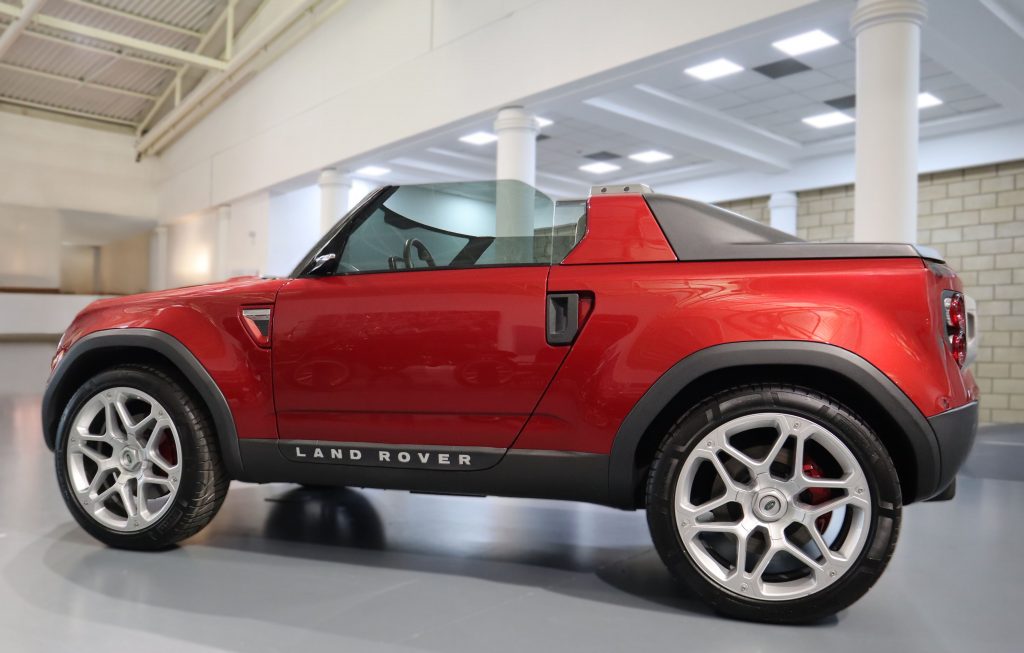
Above – The DC100 Sport was clearly aimed at the lifestyle market
With chunky looks and a wheel at each corner giving excellent approach and departure angles, the DC100 seemed to tick a lot of the right boxes. It did have a family resemblance to it, just a more modern interpretation. Following Land Rovers latest platform direction, the DC100 had a monocoque chassis with independent suspension. This was air controlled and gave 320mm of adjustment. To give a better ride, the shock absorbers would be the latest MagneRide offerings. The DC100 was shown in a station wagon offering 6 seats or a hard top variant. Land Rover were keen to play the adventure card, and offered the DC100 with various pre-determined options packs, something that they repeated with the L663. Rock climber spec had a wade aid, kin to the wade sensors on current models, a toolbox, a leisure key and a removal and / or solar roof. Adventurer spec also came with the wade aid, something called safari aid, and a power take off, something that was available on the first ever Land Rovers. It also came with a creative Pod, which I guess would be a popular feature for today’s social media influencers.
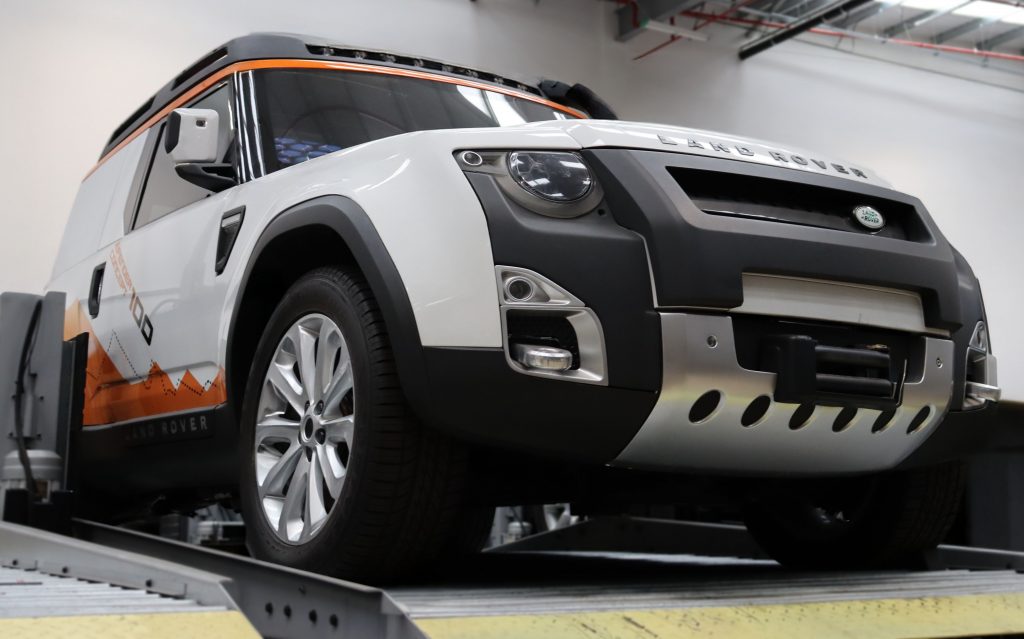
Above – The DC100 was available as either a 6 seater station wagon, or as we see here a commercial hard top.
The DC100 sport was squarely aimed at the lifestyle leisure market and even offered a Surfer Spec that came with several features which actually made it into production in later Land Rover products. Lesure keys, waterproof interior and coolers have all featured in later products, however as far as I am aware the Surf Nav is still to make an appearance. Called the extreme sports Spec, the next option pack featured a weather configurator, wheel trim protectors and a new feature on-demand spike tyres. A feature which we have yet to see materialise in reality. The three seats in the front were a feature from the very first Land Rovers and even featured in the actual Defender replacement the L663. In the back there was a drop-down tail gate and a canopy that could be lifted up. The sport was an open top vehicle and didn’t come with any weather protection meaning it wasn’t really going to be popular in the wetter parts of the world.
As with all new Land Rover products the all-wheel drive system was managed by Terrain response. Pre-sets would set the vehicles dynamics per the terrain it was traversing, however on the DC100 this came with an Auto function. Sensors in various pars of the vehicle, combined with a sophisticated camera system (Called intelligent Terrain Mapping), would scan, track and monitor what was happening and adjust the vehicle accordingly. This is now a feature on some of the more top end Land Rover products.
Below – Central to the dashboard was a large touchscreen, a feature that is on all Land Rover products today.
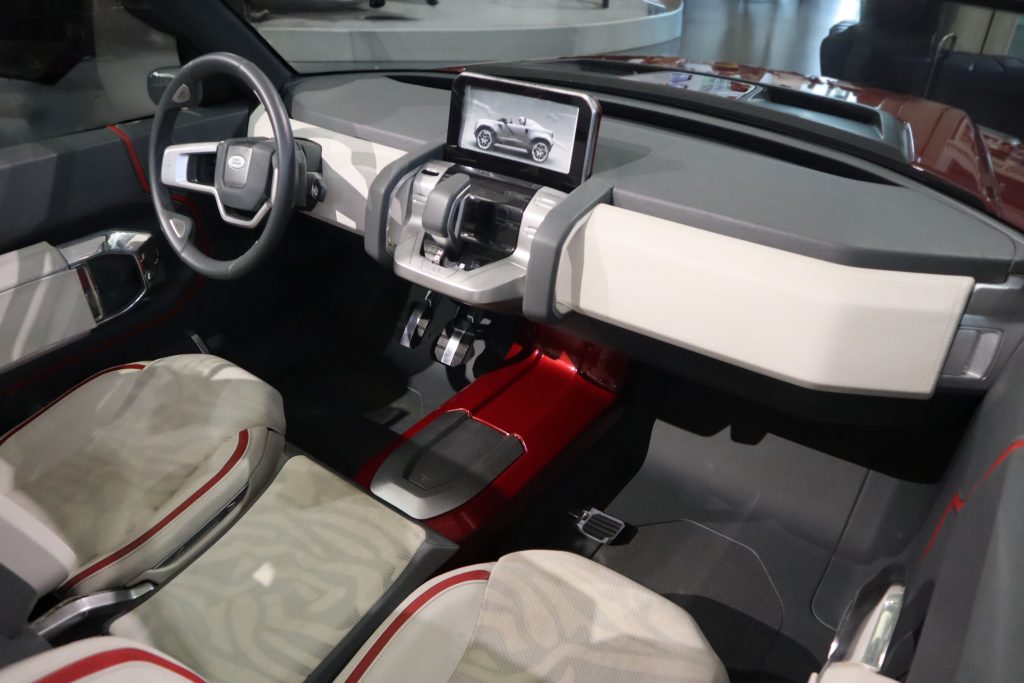
Under the bonnet, the DC100 came with a 2 litre four-cylinder engine linked to a hybrid system, both petrol and diesel were available. Power was fed to the wheels via an 8-speed automatic transmission via an intelligent drivetrain that offered both torque vectoring and driveline disconnect, again features that have made an appearance on later Land Rover products.
When the DC100 was showcased to the world, Land Rover committed to launching a new Defender in 2015, however things didn’t go to plan. The public reaction to the DC100 was not as positive as Land Rover had hoped, and the project never gained any further traction. It would be nearly 5 years later when the L663 Defender would be launched, and diehard fans still gave (and in some cases still do) that vehicle a lot of criticism too. Rumours persisted that the DC100 would return as a small sub brand of the Defender perhaps called the Landy, but after 14 years that does now seem unlikely. The few remaining DC100s are in Land Rovers private collection. A DC100 sport sometimes makes an appearance at Gaydon, and another DC100 is tucked away at Land Rover classic works.
Below Left & Right – There could have been a market for the DC100, I am sure of it, but not the market it was originally intended for.
